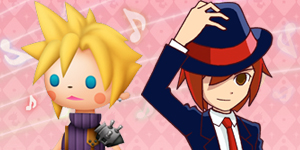Extra: Pokemon Pikachu, A True Pocket Monster
It was the late 1990s and Pokemon was everywhere. It was in your Game Boy, on your TV, spread across thousands of trading cards, and tucked inside your Burger King kids meal. One place it was not found, however, was in the then-booming virtual pet market. There were Tamagotchi, there were Giga Pets, there were even Digimon, but Pokemon? Nowhere to be seen. That changed in late 1998 with the release of the Pokemon Pikachu, a self-contained virtual part that starred none other than the loveable and iconic electric mouse. Pokemon Pikachu was a fun device in its own right, produced and branded by Nintendo as if it were its own little handheld system – see for yourself in the photo gallery below! But beyond the device itself, the included concepts also laid the groundwork for the Nintendo DS’s Pokewalker accessory and even a major feature of the 3DS’s upcoming Pokemon X and Y Versions.
Pokemon Pikachu took the basic idea of the virtual pets of its time and put a new spin on it. Like with a Tamagotchi or Giga Pet, it was up to the Pokemon Pikachu’s owner to constantly care for the digital pet. This meant carrying the yellow, plastic, LCD-screened device everywhere, as was the norm with any virtual pet. The activities that the Pokemon Pikachu required of its owners are what differentiated it from the competition, though. Feeding, grooming, and scheduling bathroom visits were not on the agenda for Pikachu. Instead, he just needed to be kept happy with gifts and walked regularly.
Walking was the crux of the device, so much so that it included a built-in pedometer. In fact, in Japan, the Pokemon Pikachu (or “Pocket Pikachu” as it was known on that side of the Pacific) was billed as an exercise device. For every twenty steps the device counted, it would reward players with a watt. These watts are what drove Pikachu to like his new owner. The more watts players earned, the more they could give to Pikachu. And the more watts given to Pikachu, the happier he would be. Not only did he display a range of animations depending on the watts given at any one time (such as yawning for a miniscule ten watts or performing a backflip when the given watts were in the hundreds), but the watts also affected his overall relationship with the player. It evolved through stages of indifference to friendship to BFF status in the days before “BFF” was even a thing. The better the relationship with Pikachu, the closer he would stand to the screen and the more he would interact directly with his owner.
Of course, it was just as easy to make Pikachu mad as it was to make him happy. Throughout the day, Pikachu performed various activities on his own accord, both at set times and at random. He might brush his teeth, stack blocks, enjoy some ice cream, or even take a shower. If the device was rapidly shaken when Pikachu was performing any of these activities, players ran the risk of ruining Pikachu’s fun. If he was stacking blocks, shakes would knock them down and upset him. If he was enjoying his ice cream, shaking the device would cause the scoop to fall off the cone. The activities often occurred at random, acting as a good deterrent to keep players from shaking the device willy-nilly in an attempt to cheat the watt system. Pikachu also got upset when neglected or not given watts regularly. The latter could be a particularly common issue due to the game’s watt gambling mode, a simple slot machine that sometimes paid out big, but was usually nothing more than a watt black hole.
At its core, Pokemon Pikachu was a simple device with a fairly basic, yet very addicting, gameplay hook of building friendship. Nintendo did expand on the idea in a number of ways with a successor device released in tandem with Pokemon Gold and Silver Versions in 2000. Appropriately called the Pokemon Pikachu 2 GS, the new device swapped out the bright yellow plastic for a glittery grey design and gave the LCD screen a much needed color upgrade. The GS device offered all the same content as the original, but enhanced it with new animations and activities for Pikachu to perform. The watt gambling option changed as well. Instead of a simple slot machine, Pikachu himself took on the role of a card dealer and had players guess whether the next card he drew from the deck was higher or lower than the one he previously drew. Why Pikachu would be a willing participant in the gambling away of watts that would otherwise be given to him is anyone’s guess.
Thanks to an included infrared port, Pokemon Pikachu 2 GS could also communicate directly with the Game Boy Color’s own infrared port. This meant that watts could be transferred into Pokemon Gold and Silver, where they would then be turned into one of eleven different items. Depending on the amount of watts transferred, players ended up with an item as simple as a Berry or as rare as, well, Rare Candy. If this whole process sounds familiar, that’s because it is: Pokemon HeartGold and SoulSilver Versions for the Nintendo DS revived the concept with their own separate device, the Pokewalker. Essentially a third Pokemon Pikachu, the Pokewalker brought back the idea of walking to earn watts (it even used the same twenty-steps-to-one-watt ratio), but expanded the device’s world beyond just Pikachu. Players could encounter multiple Pokemon, battle them, catch them, find hidden items, and more. It was a logical next step for the Pokemon Pikachu concept.
Nintendo is now taking that idea even further with Pokemon X and Y, moving the Pokemon Pikachu/Pokewalker concept directly onto the game cartridge with a new mode called Pokemon Aime. In this mode, the game places any Pokemon in the player’s party on the lower screen, facing the camera. Players can then use the touch screen to interact with the Pokemon, strengthening their bond. It’s as if the Pokemon Pikachu interface was updated into full 3D and plopped onto the 3DS’s lower screen. Granted, this mode is also heavily influenced by Nintendogs, but its main goal of friendship aligns perfectly with Pokemon Pikachu’s.
It’s through the Pokemon Aime mode and the Pokewalker that the Pokemon Pikachu legacy lives on. What started as a Pokemon cash-in of the late 90s’ virtual pet craze has evolved into an integral part of the Pokemon experience. You can see it evolve from the basic idea of building a relationship with your Pikachu in the first Pokemon Pikachu to the connectivity features of the Pokemon Pikachu 2 GS. This then turned into the multi-purpose Pokewalker before bringing it all directly into the game itself with Pokemon Aime. It was a concept fifteen years in the making, and while it’s great to see the ideas live on, it’s also a bit sad to see that tiny pixelated Pikachu cease to be. But hey, at least he lives on in the below photo gallery!

















I have a yellow Pokemon Pikachu that works!!! xDDD It’s angry at me rn. 🙁
Plus, it’s a NIP one so it’s in mint condition. I’m so happy <3